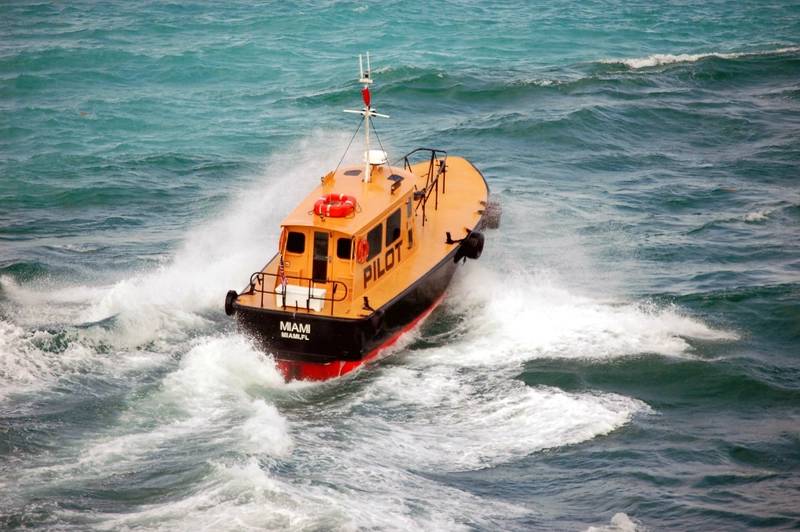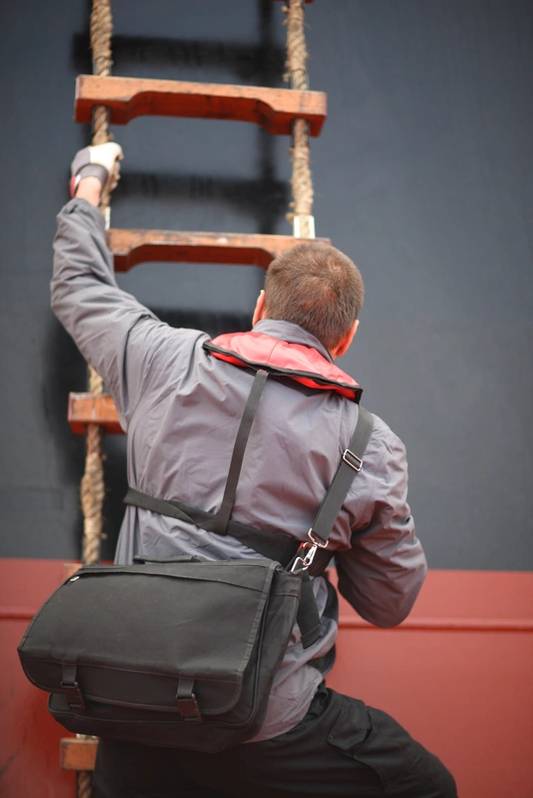Why Compulsory Pilotage Is So Effective
When asked why pilots(1) are so effective, most say, “They know the local waters.” While true, there are other important factors that make pilotage so effective.
Compulsory pilotage is navigation safety regulation, and by far the most effective mechanism available to governments to protect the marine environment while facilitating maritime commerce(2). Pilotage regulations are so effective because, unlike other maritime safety regulations which merely direct a ship to take or not take certain actions, pilot regulations place on the bridge of a ship a highly trained individual to ensure the ship takes appropriate action. This pilot:

- •possesses unmatched local knowledge;
- •is an expert ship-handler;
- •leverages emerging navigation technologies; and
- •has the sole objective of protecting the public interest.
Further, it is not just that ONE ship is under pilotage; it is that ALL large ocean-going ships in a port are required to take pilots. This creates a pilotage “safety network” over the port.
These factors are discussed below.
Unmatched local knowledge
Pilots know the waters for which they are licensed like the back of their hand. All state-licensed pilots also hold federal first-class pilot endorsements (FCPE) that require applicants to draw charts for pilotage waters from memory (many states require a separate chart-drawing exam). Obtaining a FCPE is just the beginning for state-licensed pilots, who are also subject to far more stringent state licensing regulations. In the state pilotage system, the FCPE is either an entry-level requirement for selection to a pilot apprenticeship or obtaining it is one of many steps in such a program.
State apprentice programs, where trainees learn their craft under the tutelage of senior pilots, cement this local knowledge through hundreds or even thousands of trips through these waters before an individual earns a state pilot license. Apprenticeship terms vary (i.e., 1-3 years for mariners with an advanced credential or up to 7 years for applicants with lesser maritime experience). This process ensures pilots are intimately familiar with local waters, navigational peculiarities, and port regulations.

Expert ship-handler
As mentioned, apprentice programs require numerous instructional trips through pilotage waters. The number of instructional trips must be enough to ensure trainees become proficient in handling, mooring/unmooring, and anchoring all types/sizes of ships in all weather conditions and in all parts of the port.
In addition to an apprenticeship, classroom study is critical. Classroom topics include basic, advanced, and emergency ship-handling; tug/azipod use; radar; electronic navigation; and bridge resource management. Classroom work is supplemented with state-of-the-art bridge simulators and manned models. Pilots must also take periodic refresher courses after initial licensure. Pilot continuing education programs, like those of other professions, require a specified number of hours of approved training to be completed every 3-5 years.
Leverages emerging navigation technologies
The use and advancement of emerging navigational technologies is a hallmark of pilots. Pilots have long been ardent supporters of, and active participants in, the development and use of emerging navigation technology, and have worked with government agencies to promote this technology. Pilots in the U.S. pioneered the development of Portable Pilot Units or PPUs – the biggest advance in ship navigation in decades – in the early 1980s and have used and continually honed this technology since. When shipboard equipment cannot provide pilots with necessary navigational information, having a PPU with reliable and repeatable accuracy significantly enhances pilots’ ability to perform their duties.
Protect the public interest
State-licensed pilots are expected to act in the public interest and to exercise informed independent judgment to prevent ships from engaging in unsafe operations that put the environment, property, and well-being of a port at risk. A pilot must continually decide between different courses of action. For example, whether a ship should proceed in heavy fog, strong winds, or other unexpected conditions; whether a ship should wait for particular tides or currents; whether one route or maneuver that might take more time should be used rather than another; or whether a ship should move at a lower speed despite its schedule. Pilot oversight authorities – and the public – expect pilots to make these decisions based solely on safety.
Although pilots are not government employees, they are, in effect, performing a public service. A pilot’s primary responsibility is to protect the interests of the people and marine environment on and near waters for which they are licensed. In this regard, the principal customer of a pilot’s services is not the ship or shipowner but the citizens and the public interest.
“Safety network” over ports
A final aspect of the U.S. pilotage system that makes it so effective is that all large ocean-going vessels in a port are under the direction and control of pilots from the same government-regulated pilot group. These professionals work together on their pilotage waters every day. No one knows their waterways – channels, traffic patterns, local regulations, prevailing winds and currents, shore infrastructure, etc. – better. These pilots know where ships should meet or overtake and just as importantly where NOT to meet or overtake. They also train together and regularly critique their pilotage operation to ensure it best meets the safety needs of the port. The value of this comprehensive and coordinated pilotage “safety network” cannot be overstated.
Conclusion
While not well-understood by most, pilotage is among the maritime industry’s most essential professions. The immense economic value and concurrent environmental risks posed by today’s maritime operations, combined with the reality that ships calling at U.S. ports are growing far faster than dredged channels, makes a safe and effective pilotage system more important than ever.
Notes
(1) This article focuses on independent compulsory pilots, experts in all navigational aspects of a local waterway who temporarily go aboard vessels to guide them into and out of port. This contrasts with individuals who obtain authorization to serve as a pilot while being assigned as a permanent member of a ship’s crew
(2) For a review of the U.S. pilotage system see: Unique Institutions, Indispensable Cogs, and Hoary Figures: Understanding Pilotage Regulation in the United States, 23 U.S.F. Mar. L.J. 168 (2011), available here.
